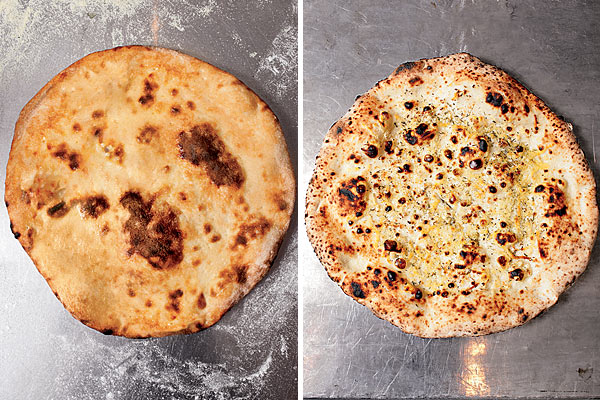
Rolled (left) and hand-stretched (right)
You should be able to tell how your pizza was made without even looking at it. Close your eyes, take a bite, and roll it on your tongue. If it’s got a dense, crumby texture and a uniform feel to it, your pizza was flattened with a roller or a dough sheeter (a mechanized roller), which pressed out carbon dioxide that developed in the fermentation process. Bakers call this process degassing the dough.
If your crust is airy and full of holes, it’s been stretched by hand. The cook’s fingers created and exaggerated air pockets in the dough, allowing the gas to expand during baking. This results in a breadlike texture with more oven spring, blistering, and variations of color and texture. “Pizzamakers [who hand-stretch] feel that they are coaxing the pizza from the dough ball in an almost organic way,” says John Arena, who teaches a pizza class at the University of Nevada, Las Vegas. “Just as Michelangelo claimed that he was liberating the statue from the marble where it already resided.”
Photograph: Anna Knott


